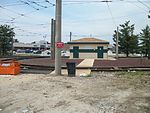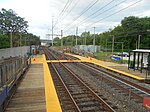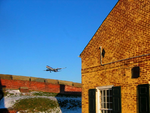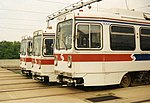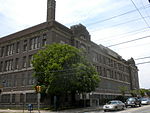Communications Technology High School

Communications Technology High School was a public high school serving grades 9–12 located at 8110 Lyons Avenue in the Hedgerow neighborhood of Philadelphia, Pennsylvania. The school, which was located next to George Pepper Middle School, was part of the School District of Philadelphia's Comprehensive High School Region; in its later years, it operated as a campus of John Bartram High School, which is still in operation. In 2013, amid the rapid growth of publicly-funded charter schools in Philadelphia, the City shut down Communications Technology High School, along with 22 other district-run schools, to cut costs and consolidate the district's remaining students on fewer campuses. Students enrolled at Communications Technology at the time were automatically re-enrolled at the main campus of John Bartram High School.
Excerpt from the Wikipedia article Communications Technology High School (License: CC BY-SA 3.0, Authors, Images).Communications Technology High School
Lyons Avenue, Philadelphia
Geographical coordinates (GPS) Address Nearby Places Show on map
Geographical coordinates (GPS)
| Latitude | Longitude |
|---|---|
| N 39.8986 ° | E -75.246 ° |
Address
Communications Technology High School
Lyons Avenue
19153 Philadelphia
Pennsylvania, United States
Open on Google Maps
